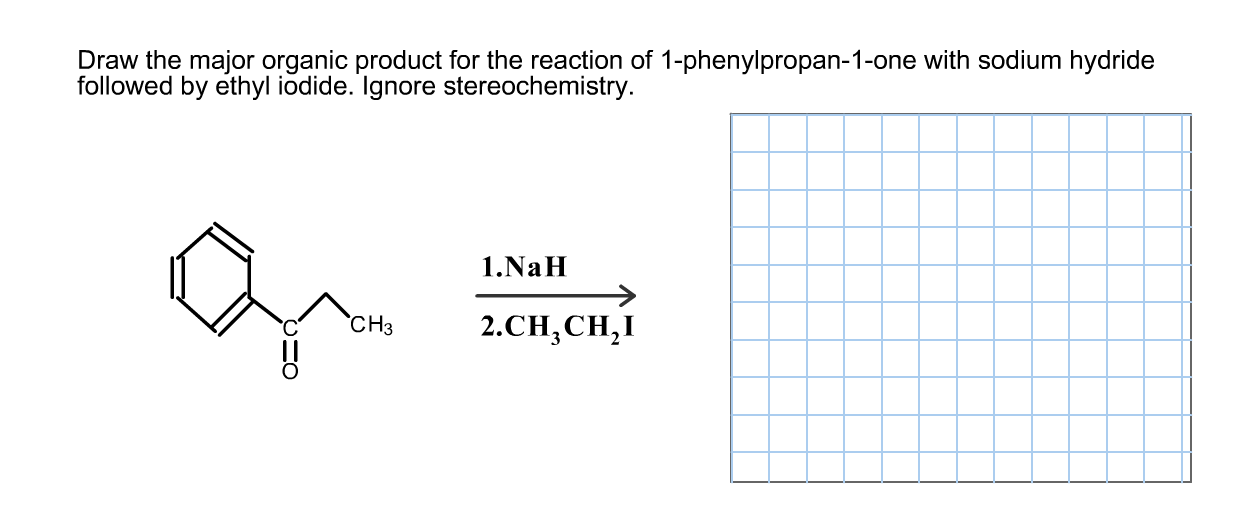Draw The Major Organic Product From The Reaction Sequence Provided Below. Draw the major organic product generated in the reaction below. Give the major organic product(s) for each of the following reactions or sequences of reactions.

Predict the major product of the following reaction: Draw the major organic product in the boxes provided for each reaction scheme below. Draw the two major organic product s of the reaction below do not draw inorganic byproducts the mechanism of each reaction (sn2, e2, sn1, or e1) is written below the reaction arrow.
If There Is More Than One Major Product Predict The Neutral Organic Product Of The Following Reaction.
Draw the major organic product of the following reaction sequence. Draw the two major organic product s of the reaction below do not draw inorganic byproducts the mechanism of each reaction (sn2, e2, sn1, or e1) is written below the reaction arrow. Draw the major organic product from the following reaction sequence.
Because The Reaction Is Favorable, The Product Must Lie Below The Starting Material.
Predict the major organic product of reactions of carboxylic acids, esters and other acid derivatives. Work out the synthesis on a separate sheet of paper, and. If the reaction is regioselective, only draw the major product.
Draw The Major Organic Product Generated In The Reaction Below.
Give the major organic product(s) for each of the following reactions or sequences of reactions. Provide the structure of the major organic product in the reaction below. When you are finished, check your answer by pressing the check molecule # button.
Be Sure To Indicate The Correct Relative Stereochemistry (I.e.
1) hg(oac)2, meoh 2) nabh, Draw the major organic product(s) for the following reaction. Draw the major organic product from the reaction sequence.
What Is The Major Organic Product Obtained From The Following Sequence Of Reactions:
Solution for draw the major organic product of the following reaction sequence. Both reactions interconvert alkoxide ions and alcohols. The reaction sequence has five species, the starting material, three intermediates, and one product.
Related Posts
- Which Type Of Bow Has Limbs That Curve Away From The Belly Of The BowWhich Type Of Bow Has Limbs That Curve Away From The Belly Of The Bow. Several types have limbs that curve away from the belly of the bow. A reflex b ...
- What Evidence Do Paleobotanists Look For That Indicates The Movement Of Plants From Water To LandWhat Evidence Do Paleobotanists Look For That Indicates The Movement Of Plants From Water To Land. A) waxy cuticle to decrease evaporation from leave ...
- Arrange The Events In The Life Cycle Of Mosses In The Flowchart BelowArrange The Events In The Life Cycle Of Mosses In The Flowchart Below. Which of these represents the sporophyte generation of the moss life cycle? Th ...
- How Far Is Nashville From MemphisHow Far Is Nashville From Memphis. It ends in nashville, tennessee. How far is memphis, tennessee from nashville, arkansas?10 Reasons You Should Move ...
- Draw The Lewis Structure For The Hydrogen Cyanide Hcn MoleculeDraw The Lewis Structure For The Hydrogen Cyanide Hcn Molecule. To draw the lewis structure for hcn, we will first calculate the total number of vale ...
- Dont Let This Distract You From The Fact ThatDont Let This Distract You From The Fact That. But in fact, it was nothing. New comments cannot be posted and votes cannot be cast.Don't let thi ...
- What Is The Product AssumeWhat Is The Product Assume. Assume standard workup after each step and that only the major product of the first step is taken on to the second step. ...



